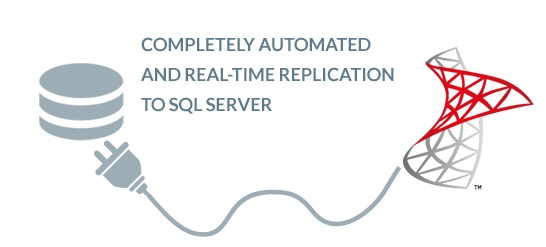An Overview of Migrating Oracle Database to Microsoft SQL Server
Before going into the methodologies of migrating database Oracle to SQL Server, an overall view of the two will be in order to better understand the process.
Oracle Database
With the Oracle database, you can quickly and safely store and retrieve data. Here are some features and benefits.
- Cross-platform database that can run on various hardware across operating systems such as Windows Server, Unix, and GNU/Linux
- ACID-compliant database ensuring data integrity and reliability
- Logical data structure to store data so that users can interact with the database regardless of where the data is stored physically.
- Partitioning feature that permits users to divide a large table into different segments and store each piece across storage devices.
- Oracle Recovery Manager allows DBAs to carry out cold, hot, and incremental database backups and point-in-time recoveries.
- Oracle Real Application Clusters (RAC) clustering ensures high availability, enabling the system to be up and running without break in services in case one or more servers fail in a cluster.
Next, before migrating database Oracle to SQL Server, the features of Microsoft SQL Server will be seen in some detail.
Microsoft SQL Server
SQL Server is a relational database management system (RDMS) developed by Microsoft and is created for the primary function of storing and retrieving data as required by other applications. All RDMS like MySQL, Oracle, Sybase, Postgres, Informix, and SQL Server use SQL as their standard database language.
Now, what are the features of SQL Server that make businesses want to migrate databases from Oracle?
- Allows access to data in the relational database management systems
- Users can describe the data, define the data, and manipulate it in a database.
- It is easy to embedother languages using SQL modules, libraries, and pre-compilers, and create and drop databases and tables.
- Users can create view, stored procedures, and functions in a database and set permissions on tables, procedures, and views.
Present IT stack scenario in organizations
Oracle database is currently being used by a huge number of mid and large-sized organizations as part of their IT stack and many of them are still using the on-premises database version. As the volume of data to be processed increases, the infrastructure is stretched, requiring alternate and better data management, more processing power, and higher storage, thereby increasing exponentially data maintenance costs. Most businesses, therefore, find it difficult to run their databases at optimum costs while finding a solution for the increasing complexities.
Given this scenario, organizations are recognizing and accepting the multiple benefits of migrating enterprise applications to the cloud. For this to happen, it is first necessary to evaluate which platforms are perfect to handle future growth. In short, the need of the hour is to be on a platform that provides improved power and performance at a reasonable cost structure. One of the major alternatives to on-premises Oracle database is migrating Oracle to SQL Serverhosted in Microsoft Azure cloud or Oracle Cloud.
Migrating Database Oracle to SQL Server
SSMA or the SQL Server Migration Assistant (SSMA) for Oracle assists in seamlessly migrating Oracle databases to SQL Server, Azure SQL Database, or Azure Synapse Analytics. With SSMA for Oracle, it is possible to review database objects and data, access databases for migration, and move database objects to SQL Server, Azure SQL Database, or Azure Synapse Analytics. However, SYS and SYSTEM Oracle schemas cannot be migrated.
The following are the steps for database migration from Oracle to SQL Server.
- A new SSMA project has to be created and then project conversion, migration, and type mapping options have to be set up.
- A connection has to be established with the Oracle database server and an instance of the SQL Server.
- The Oracle database schemas have to be mapped to SQL Server database schemas and then the Oracle database schemas have to be converted into SQL Server schemas.
- The converted database objects have to be loaded into SQL Server. There are two ways of doing so. One is by saving a script and running it in SQL Server. The other is by synchronizing the database objects.
- Migrate data Oracle to SQL Server
- Finally, update all database applications.
There are other uses of this Oracle to SQL Serverdata migration process too. It can also be used for migrating Oracle databases to Azure SQL database and Azure Synapse Analytics.
Extracting and copying Data
Businesses have to continually load data warehouses to undertake accurate data processing and analytics. This can be done by extracting data from one or more operational systems and copying it into a data warehouse. This process is ETL or Extraction, Transformation, and Loading.
How does ETL work?
During extraction, the data to be migrated is identified and extracted from different Oracle database systems and applications. Based on the capabilities of the source database, a certain degree of data transformation is possible at this stage. The volume of the extracted data can range from hundreds of kilobytes to gigabytes.
After the data is extracted in the Oracle to SQL Server ETL process, it is transported to the SQL Server which in this case is the target database. Some transformation takes place in this stage too depending on the selected method. For example, a SQL statement that can access a remote target directly through a gateway can link two columns in a series as a part of the Select statement.
The focus here is scalability. Most developers and users of the Oracle database have the professional expertise and skillsets to program complicated transformation logic using PL/SQL. There are alternatives for such data manipulation operations where the emphasis is on implementations that use the recently-launched functionalities of Oracle. It is especially for ETL from Oracle to SQL Server and the parallel query infrastructure.
